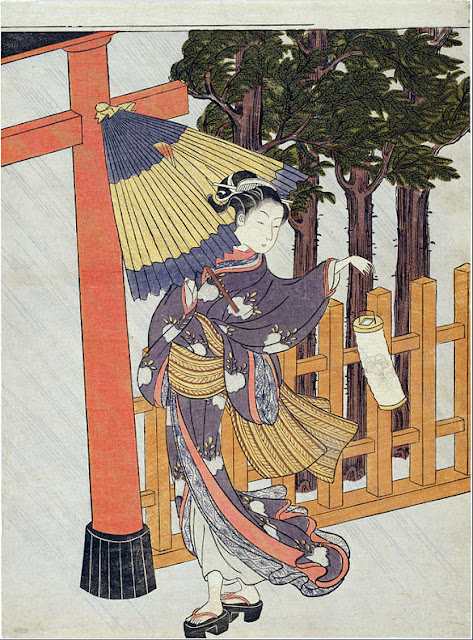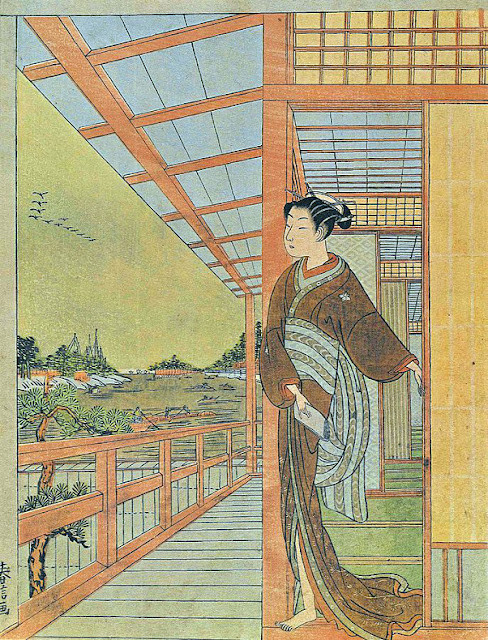 |
| Harunobu: Girl on a veranda |
Suzuki Harunobu (1725-1770) was the first woodblock artist who made full-colour prints, so-called nishiki-e. That, in combination with other innovations in technique, format, material, and style, makes him one of the most important masters of ukiyo-e.
This woodblock print shows a bijin, a beautiful girl. It is the typically petite girl of Harunobu's art: a slender, elegant figure - almost a child. While many other ukiyo-e-artists paid an immense attention to the kimono and its pattern, these aspects play a relatively small role in Haronubu's bijinga. On the other hand, he was the first artist to make real backgrounds, an environment for his figures.




